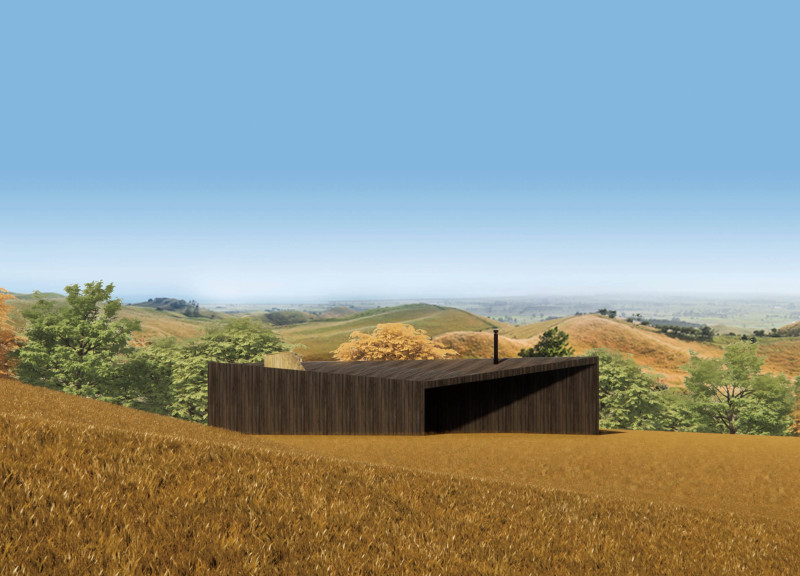5 key facts about this project
The main function of the "Bon Voyage" cabin is to provide a recreational space that caters to both social interaction and individual retreat. The layout is strategically divided into communal areas and private zones. The living area comprises a multifunctional space that includes the kitchen, dining area, and a relaxation zone. Large fenestrations ensure that the interior remains bathed in natural light and offers picturesque views of the surrounding environment. This intentional orientation enhances the experience of being outdoors by making the natural world a significant part of everyday life within the cabin.
A distinguishing feature of the cabin is its unique roof structure, nicknamed "The Boat." This design approach not only adds an aesthetic appeal but also serves a practical purpose. The sloped roof incorporates skylights that provide light during the day while offering opportunities for stargazing at night. This innovative element connects the residents to the celestial experience, promoting a sense of wonder and tranquility during their stay.
The project's materiality plays a crucial role in achieving its architectural vision. The exterior features black wood cladding, selected for its durability and natural weather resistance. This choice allows the cabin to harmonize with its surroundings, offering a modern yet understated presence in the landscape. Furthermore, local timber has been employed in various structural elements, emphasizing the project’s commitment to sustainability and locality. Such eco-conscious decisions illustrate a growing trend in architecture where environmental considerations inform the design process.
The fluidity between the indoor and outdoor spaces is another significant aspect of the "Bon Voyage" cabin. The presence of sliding windows creates an accessible transition, encouraging residents to engage with the landscape beyond the walls. This design fosters an immersive experience, where the boundaries between interior living and the natural environment become blurred. The deck extends the cabin's livable area outdoors, providing a venue for activities and relaxation while framing the beautiful vistas that surround the project.
The careful arrangement of spaces emphasizes a balance between public and private experiences. The private quarters, which include the bedroom and bathroom, are thoughtfully separated from the communal areas, ensuring that inhabitants have a personal retreat when needed. This zoning reflects a deep understanding of the human experience, addressing the need for both social interaction and personal space.
In summary, the "Bon Voyage" cabin represents a thoughtful balance of architecture, functionality, and environmental integration. Its design strategies highlight an innovative approach to connecting inhabitants with nature, while simultaneously providing the comforts of modern living. Interested readers are encouraged to explore the project presentation further, reviewing architectural plans, sections, and designs to gain a deeper understanding of the architectural ideas behind this unique cabin. The careful details throughout the project underscore how architecture can create meaningful spaces that resonate with both their occupants and the surrounding landscape.


























